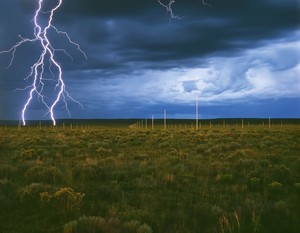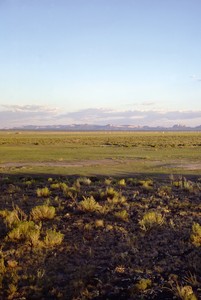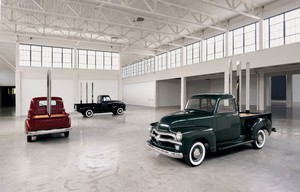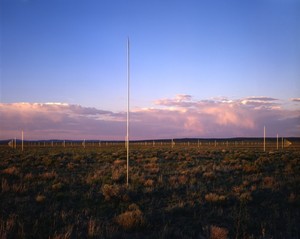Walter De Maria’s final sculpture, Truck Trilogy, will be shown for the first time outside of the United States in an exhibition at Gagosian’s Le Bourget gallery beginning on October 19, the month that would have marked De Maria’s ninetieth birthday. Incorporating three classic pickup trucks from the 1950s, the sculpture has been presented only once before, at Dia Beacon in New York, from 2017 to 2019. Shown alongside a selection of other rarely seen sculptures, drawings, films, and archival materials, Truck Trilogy is the centerpiece of an exhibition that illuminates De Maria’s lifelong preoccupation with precise measurement and the imagined. The Singular Experience is curated by Donna De Salvo, senior adjunct curator at Dia Art Foundation, the entity that commissioned, maintains, and manages access to the sites of De Maria’s world-renowned permanent installations: The Lightning Field (1977), The Broken Kilometer (1979), The New York Earth Room (1977), and The Vertical Earth Kilometer (1977).
Conceived in 2011 and completed posthumously in 2017 according to his specific directions, De Maria’s final work comprises three Chevrolet Advance Design 3100 pickup trucks, iconic models manufactured from the late 1940s to mid-1950s, when the artist was a young man. Polished, stripped of all extraneous elements and therefore function, and fitted with upright stainless-steel rods in their finished oak panel beds, they stand as monuments both austere and hallucinatory. A different configuration of triangular, square, and circular rods crowns each vehicle, turning tools of transport into geometric beacons of reflection. At once humorous and solemn, industrial and metaphysical, the work condenses De Maria’s pursuit of fusing hard fact with wonder. Truck Trilogy is complemented by 13, 14, 15 Meter Rows (1985), a floor sculpture that consists of forty-two polished polygonal solid stainless-steel rods arranged horizontally in three rows, each successive row increasing by a meter in length. The work attests to De Maria’s fascination with mathematical sequences that produce visual harmony, while also reflecting viewers’ movements.
De Maria was a trained percussionist, and rhythmical patterns, frequency, and perceptions of harmony can be traced throughout his expansive oeuvre back to the 1960s, when he was an integral member of avant-garde music projects in downtown New York. A founding member of the Druds—a band with Andy Warhol, Patty and Claes Oldenburg, Jasper Johns, Larry Poons, and La Monte Young—De Maria went on to play drums with the Primitives, a band that would later become the Velvet Underground, and produced sculptural and conceptual works directly connected to music.






















![Walter De Maria Untitled [Shadow with Red Car], c. 1961–64. Graphite and colored pencil on paper, 18 × 24 inches (45.7 × 61 cm) © 2025 Estate of Walter De Maria. Photo: Thomas Lannes](https://gagosian.com/media/images/exhibitions/2025/walter-de-maria-the-singular-experience/NQx4yxKjQtyg_300x300.jpg)


















